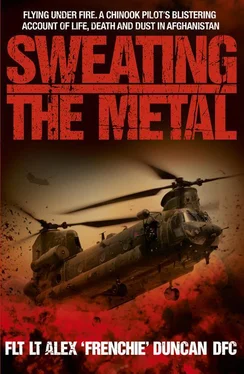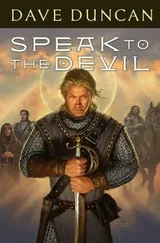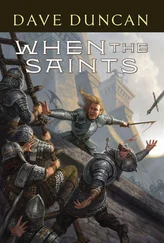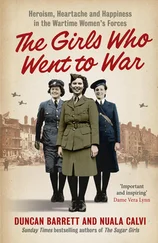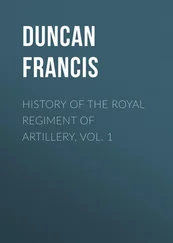‘Roger that, Doorman. We’ll keep their heads down,’ I hear against a deafening live soundtrack of 30mm cannon fire.
‘Okay, Rich. There are two or three triangular-shaped hills there that are almost like the pyramids at Giza. They’re your marker for a left-hand turn to end up on a north-west track. That’ll put us a mile and a half out from the LS.’
‘Got it.’
Rich flies fast, aggressive and dirty as we make the approach at low level. His favourite technique to arrest our speed is a series of steep, acute turns and he’s expert at it; the tail goes left, right, left, right as our speed drops. I’m ‘eyes out’, looking out the window, but I look at the engine instruments briefly to scan the Ts and Ps and that’s when I notice the NR is at 114%! In all my hours of flying, I’ve never seen it that high. 110% is the limit, and I’ve never even seen it that high, let alone 114%!
It’s weird because normally once you get above 104% – still within limits – the gearbox protests by making a noise that sounds like God shouting, and you feel a shed-load of vibration in the aircraft caused by the blades slapping the air. Normally, push the aircraft this hard and you know all about it. This time? Nothing. The aircraft is flying with NR of 114% and it’s as smooth as a baby’s bottom. There’s no time to tell Rich to correct it, so I pull on the collective to create some lift to bring the NR back within limits.
Rich looks at me. ‘Fuck, Frenchie! Thanks for that.’ He’s as stunned as I am.
‘No worries. Twenty seconds to go. HLS is on the nose. You visual? Speed is good, good rate of descent. Everyone secure?’ I ask.
As Rich sets us up in the gate at 100ft and 30kts, the LS is still taking fire. Suddenly the Defensive Aids Suite detects a threat. Some sort of weapons system has engaged us and the DAS has picked it up.
BANG! BANG! BANG! BANG! It fires out a series of flares.
‘60ft, 30kts,’ I say as Rich brings the nose up.
Jim and Bob take over the talk-down and within seconds I feel the rear wheels land on.
‘Two wheels on… six wheels on,’ from the back.
The ramp goes down and the doctor heads out to meet the troops who are already with the casualties and heading for the aircraft. At the front, Rich and I are busy scanning everything and doing all the checks we can so that as soon as we get the nod, we can lift; we know the crewmen are busy and they’ll signal to us to get the hell out of Dodge the minute they can.
The threat from incoming mortars is a real worry for me. How much longer can our luck hold? The casualties take longer than I’d like to load but, with seven of them, that’s to be expected. I look down and see a pair of feet in the 2ft narrow ‘corridor’ that leads from the rear of the cab to the cockpit. Something’s wrong though; they belong to an ANA who is laid on his back and his toes are pointing down towards the floor, not up as they should be. Both ankles are broken.
I catch Jim’s eye. ‘This guy’s in a bad way, mate,’ he says. ‘I’m just putting a tourniquet on him and it’s my tourniquet cos we’ve run out of them in the back.’
Fuck me, it must be bad; I’ve never heard of that happening before. I look towards the ramp and a scene of absolute bedlam greets me: six wounded British casualties and a wounded Afghan soldier on board – two T1s, four T3s and a walking wounded. I can’t ever remember a time before when we had that many casualties in the cab. There are stretchers taking up every spare inch of floor space and almost nowhere for the QRF guys to go. IV drips hang from every point, the floor is awash with blood; I can almost smell it. It’s a scene of utter devastation – broken bodies and medics working like crazy in the dark, cramped dusty cab.
‘Ramp up, clear above and behind.’
That’s all we need to hear. ‘Lifting,’ says Rich, pulling up the collective. He pushes forward on the cyclic to get the nose down and we disappear, as low and fast and dirty as we can, manoeuvring all the while to make ourselves as difficult a target as possible. We’re engaged again; the DAS fires flares off to tempt away whatever threat it’s detected headed towards us.
The number one priority on lifting is to get the aircraft out of the engagement zone. Rich turns an immediate left as we depart, along the wadi at low level – Sangin’s to the right and we don’t want to get too close to that without getting some speed up.
The team are trying to stabilise Captain Hicks. I ask Bob how he is.
‘He’s taken a head wound, Frenchie. They’re doing CPR on him at the moment.’
They manage to revive him, but I’m in awe of the crewmen. Already overworked with running the cab and managing the aircraft, they’re up to their elbows in all of the worst aspects of conflict – the bloodied, battered bodies of young soldiers. It’s hard enough for us looking in the mirror and seeing the guys working on them, but there’s no escape for the crewmen – they’re up close and personal. I look at the MERT team working on Capt Hicks; he has multiple arrests but each time they perform CPR he comes back. I will him to hang on. We all want him to live.
We run down as fast as we can down the east side of Sangin, along the east side of FOB Robinson, and once we clear that we do a right turn towards the south-west, north of Gereshk and a straight run for Bastion, avoiding all the danger areas. With the nose dipped, we are wringing every single ounce of power the cab has, flying at the aircraft’s VNE or Velocity Never Exceed. The ASI shows us at 160 knots – even more at times.
The engine is temperature-limited rather than torque-limited in theatre, so there are certain temperature bands that govern how hard you can push it. Continuous does what it says on the tin, as does thirty-minute power. Ten minutes means you can push hard for ten minutes but then have to come back into thirty minutes. Finally, there is ‘Emergency’ – you can push the engines to the max for five minutes but doing so starts a countdown timer. Once you exceed that, the engine’s ready for the bin.
We literally can’t fly the aircraft any harder to get it back. We are flying at the top of ten-minute power for nine minutes fifty-nine seconds, and then we lower the lever, get the engine back into thirty minutes and then yank the power back up to the ten-minute band. We try everything we’ve got. We’re flying faster than I’ve ever done before in a Chinook and it’s shaking like a bastard. We can’t fly a straight line back – the risk to the cab from ground fire is too great. We have to weigh up the options: save thirty seconds and risk losing the seven casualties, the crew, the medics and the cab, or go the longer way round? It’s a no-brainer. We can’t go as the crow flies so we take the quickest route we can. It adds maybe thirty seconds to our journey, but it feels like an age. I feel like we’re watching an hourglass and the sand’s about to run out.
Bastion’s in sight now. I can see the wire. Nightingale and the HLS are on the nose. We’re seconds away. Rich is working it like a madman; we’re digging deep to give everything we can.
‘How are things in the back?’ I ask.
‘I’m sorry mate, I think it’s over. He’s had a heart attack and they’re stopping CPR,’ says Bob.
I feel like the bottom has dropped out of our world. It’s absolutely heart-wrenching. But there’s still a chance, so we don’t stop. We don’t ever stop until we’re on the ground and we’ve done everything we can. We rip the aircraft all the way to Nightingale and the team are waiting for us. Rich stops the cab on a sixpence, we land on and the ramp goes down. The casualties are off, but we’re too late for David Hicks – sadly, he doesn’t make it.
Читать дальше
